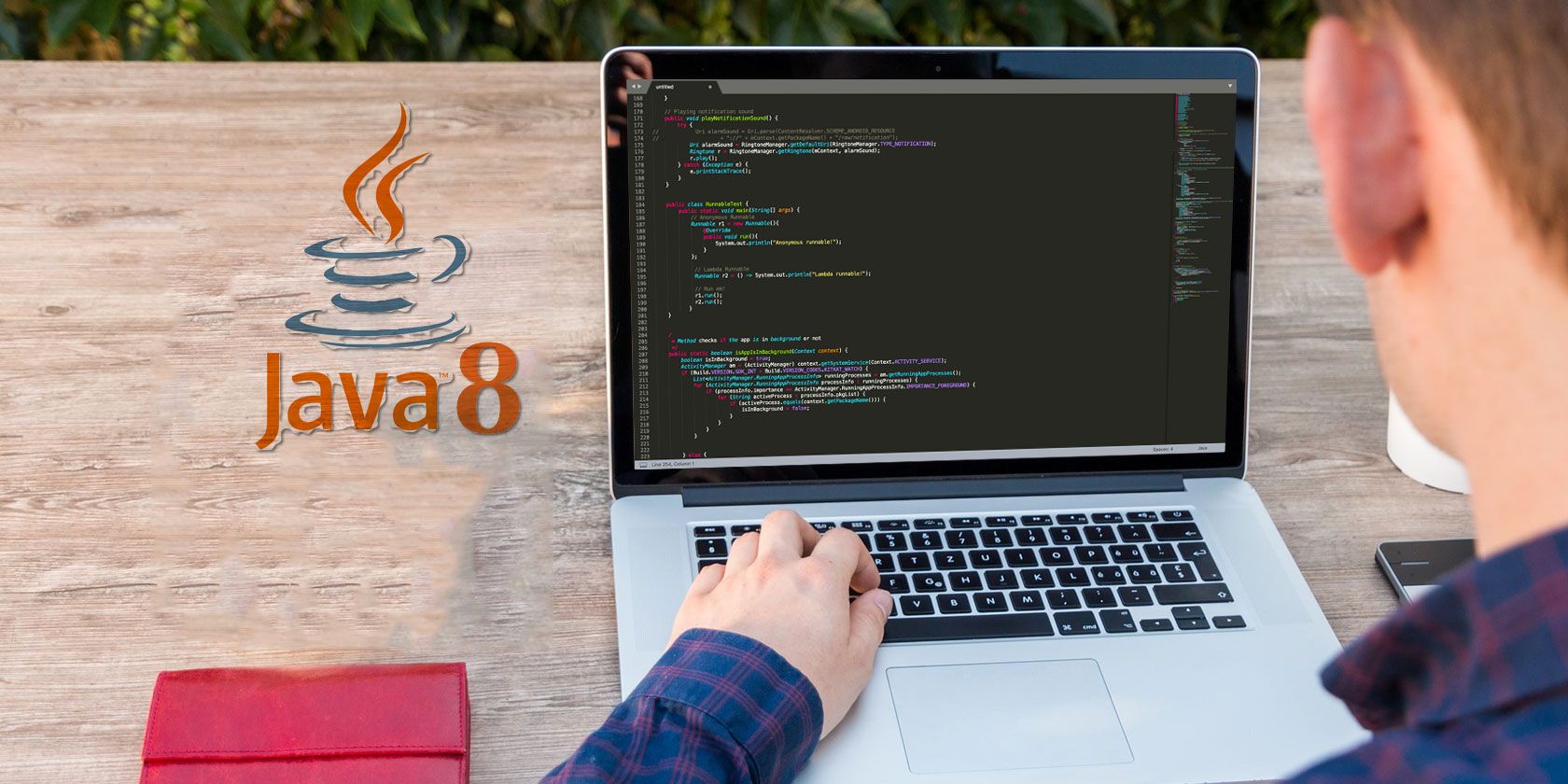If you're a Java programmer and you're interested in learning more about Java 8 lambdas, in this article we're going to take a closer look at lambda syntax and usage.
A lambda expression in Java is a concise way to express a method of a class in an expression. It has a list of parameters and a body. The body can be a single expression or a block. It is commonly used where an implementation of an interface is required. This need usually arises when an interface is required as the argument to invoke a method.
Some Simple Lambda Expressions
Let us look at some simple examples of lambda expressions.
The following is a lambda expression which accepts two numbers x and y and computes the sum.
(int x,int y) -> x + y;
Drop the parameter types for a more concise representation:
(x, y) -> x + y;
Define a function which accepts no parameters:
() -> 404;
The following is valid too, which accepts no parameters and returns nothing:
() -> {}
No need for parantheses enclosing parameters for a single parameter:
x -> x + 1
More complex code blocks are also possible. The following lambda accepts a single line parameter and does some processing on it. Note that the type of the parameter is inferred from the surrounding context:
line -> {
String[] x = pattern.split(line);
return new Player(Integer.parseInt(x[0]),
x[1],
x[2],
x[3],
Integer.parseInt(x[4]));
}
Clean and Concise Coding
Using lambda expressions helps make your code clean and concise. To assist in this, Java 8 classes make extensive use of lambdas.
Looping Over a List or a Set
Collection classes such as List, Set, Queue, and such implement the Iterable interface which makes looping over the elements much easier.
Declare a list of names.
List<String> names = Arrays.asList("Joe", "Jack", "James", "Albert");
Loop over the list without lambda:
for (String name : names) {
System.out.println(name);
}
Using lambda, the above loop can be written as:
names.forEach(name -> System.out.println(name));
With Java 8 method references, the above can be written even more concisely as:
names.forEach(System.out::println);
Looping Over a Map
A Map is a mapping of keys to values. Looping over a map involves looping over each of the (key, value) mapping. Compare how you can use lambdas for this situtation.
First define a map:
Map<String,Integer> map = new HashMap<>();
map.put("Atlanta, Georgia", 110);
map.put("Austin, Texas", 115);
map.put("Baltimore, Maryland", 105);
map.put("Birmingham, Alabama", 99);
map.put("Boston, Massachusetts", 98);
You can loop over this map in the traditional way:
for (Map.Entry<String,Integer> e : map.entrySet()) {
System.out.println(e.getKey() + " => " + e.getValue());
}
Here is how you can do the same thing in a quick and concise way using lambdas:
map.forEach((k, v) -> System.out.println(k + " => " + v));
Functional Interfaces
What is the return type of a lambda expression? In other words, what is the type of X in the following statement?
X x = a -> a + 1;
The return type of a lambda expression is a functional interface - an interface with a single abstract method. You can assign a lambda expression to an interface with a compatible abstract method. Some examples below.
Creating a Multi-Threaded Task
Consider creating a task for execution in a separate thread -- you are required to define the task as a Runnable interface and implement the run() method. Here Runnable is a functional interface.
class MyTask implements Runnable {
...
public void run() {
// implement your task here
System.out.println("Running in a separate thread now.");
}
...
}
You can then create an instance of the MyTask class and use it to start a new thread of execution.
MyTask task = new MyTask();
Thread thread = new Thread(task);
thread.start();
Using a lambda, the process of creating a Runnable becomes much easier. The task definition above can be rewritten as:
Runnable task = () -> System.out.println("Running in a separate thread now.");
Or even:
Thread thread = new Thread(() -> System.out.println("Running in a separate thread now."));
thread.start();
Comparison Using a Comparator
The Comparator is a functional interface for comparing objects of a given type. It defines a single abstract method called compare() which can be defined using a lambda expression.
Here is a lambda expression creating a Comparator used to compare strings case-insensitively.
Comparator<String> cmp = (x, y) -> x.compareToIgnoreCase(y);
Once an instance of the Comparator functional interface has been created, it can be re-used as required.
Here, we sort a list of strings in ascending order.
List<String> names = Arrays.asList("Joe", "Jack", "James", "Albert");
Collections.sort(names, cmp);
names.forEach(System.out::println);
// prints
Albert
Jack
James
Joe
The list above is sorted in place. We can now search it using the binarySearch() method as follows:
System.out.println("search(Joe):" + Collections.binarySearch(names, "Joe", cmp));
# prints
search(Joe):3
Computing maximum and minimum from a list is also easy using lambdas.
Define some data:
List<Integer> temps = Arrays.asList(110, 115, 105, 99, 98, 54, 109, 84, 81, 66, 72, 135, 115, 75, 82, 90, 88);
Use a lambda expression to define the comparator:
Comparator<Integer> cmpTemp = (x, y) -> Integer.compare(x, y);
And print the maximum and minimum:
System.out.println("------ Max/Min ------");
System.out.println(Collections.max(temps, cmpTemp) + "/" + Collections.min(temps, cmpTemp));
Use in GUI Programming
Lambda expressions are also extremely useful in GUI programming to implement event handlers. Here is an example of using a button click handler.
JButton button = new JButton("Click Me");
button.addActionListener(e -> System.out.println("Button clicked!"));
And that was a quick look at using lambdas in Java 8.
Have lambdas made your life easier since Java 8? Please explain in the comments below.

